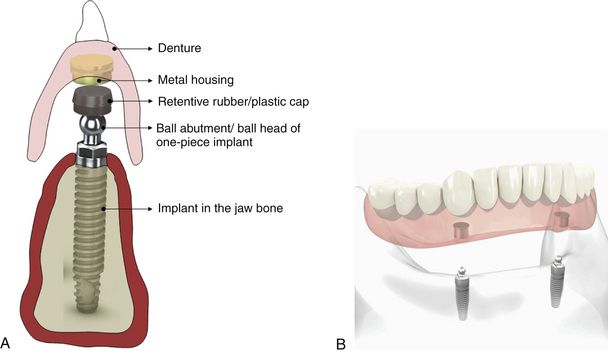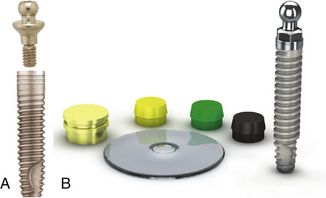Fig 10.1 (A–e) Depending on the ridge form and bone available to insert the longest and widest possible implants, a minimum of 2–4 implants are required to retain the mandibular overdenture, whereas a minimum of 4–6 implants are required to retain the maxillary overdenture. The low-density bone and presence of facial cantilevering are the reasons to place more number of implants for the maxillary overdenture. If two implants are planned for the mandibular overdenture, both implants should be inserted closer to the midline, to avoid anteroposterior rocking of the denture.
Prosthetic options for completely edentulous patients
Problems associated with conventional dentures
Indications for implant overdenture
1. Inadequate bone volume to insert the number of implants required for full arch fixed prosthesis
2. When the relation between the two arches makes the achievement of a fixed prosthesis difficult
3. Palatal/ridge defect which makes conventional denture fabrication difficult
4. Highly resorbed ridge, inadequate to retain the conventional denture
5. Phonetic problems caused by difficult control of the saliva movement between the prosthesis and the maxillary gum
6. High aesthetic expectations.
7. Limited financial budget for the prosthesis
8. Medically compromised patients for whom the placement of a large number of implants, grafting procedures, etc. are not possible
9. Patients with complaints of low retention of their old conventional dentures
10. Patients with a history of poor oral hygiene maintenance.
Advantages of the implant overdenture over the ridge supported denture
1. Implants prevent further bone loss
2. Improved denture retention, support and stability
3. Reduced denture size eliminates palate extension and deep flanges of the denture
4. Decreased soft tissue abrasions
5. Improved chewing efficiency
6. Improved occlusion – original centric occlusion can be reproduced
7. Improved maxillofacial appearance as the implant-retained prosthesis can better support the lip and cheek muscles
8. Improved retention and removal of palatal extension improves speech.
Advantages of the implant overdenture over the fixed implant prosthesis
1. Fewer implants are required for overdenture
2. Less specific implant placement
3. Grafting procedures (e.g. sinus grafting, vertical bone augmentation, etc.) can be avoided
4. Improved maxillofacial aesthetics with labial flanges, soft tissue drape, and prefabricated denture teeth
6. Easy oral hygiene maintenance
8. Reduced stress on the implants as the prosthesis can be removed at night.
Disadvantages of the implant overdenture
1. Patient’s psychological feeling against wearing a removable prosthesis.
2. Needs regular maintenance like denture relining, change of retentive components, new prosthesis after few years etc.
3. Continuous posterior bone loss.
4. Denture movement where only two implants are used for denture retention.
5. More interarch space is required to compensate the denture base and the implant superstructure.
Components required
Several kinds of prosthetic components are placed over implants as well as into the tissue surface of the denture. These components may vary in shape, size, design from one implant system to the other, with the type of retention device the dentist delivers to his/her patient, e.g. ball and socket, locator abutment, bar header clip type, etc. (< ?xml:namespace prefix = “mbp” />Figs 10.2–10.4).

Fig 10.2 Either a single-body, ball head implant or a two-piece implant with ball abutment is inserted into the jaw bone. A retentive rubber or plastic cap is inserted in the metal housing before placement over the ball abutment. When the denture filled with self-cure acrylic is seated over the metal housing, the latter comes out embedded in the tissue surface of the denture. (A and b) When this denture with the female part (metal housing with retentive cap inside) is seated over the male part of the implant (ball abutment), it provides adequate retention to the removable implant overdenture
(Courtesy: Nobel Biocare).
Stay updated, free dental videos. Join our Telegram channel

VIDEdental - Online dental courses



